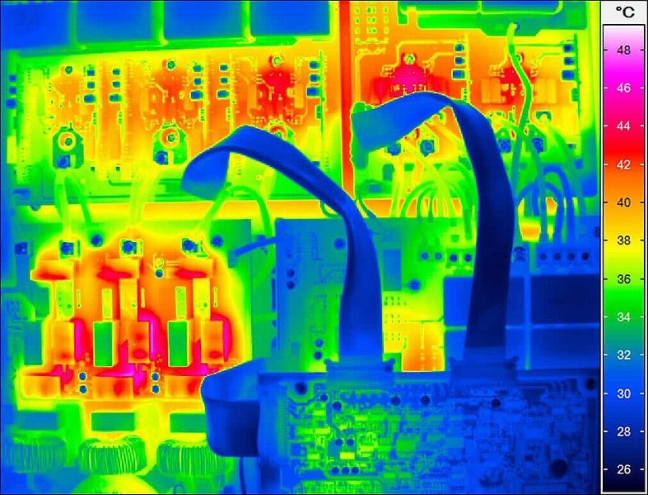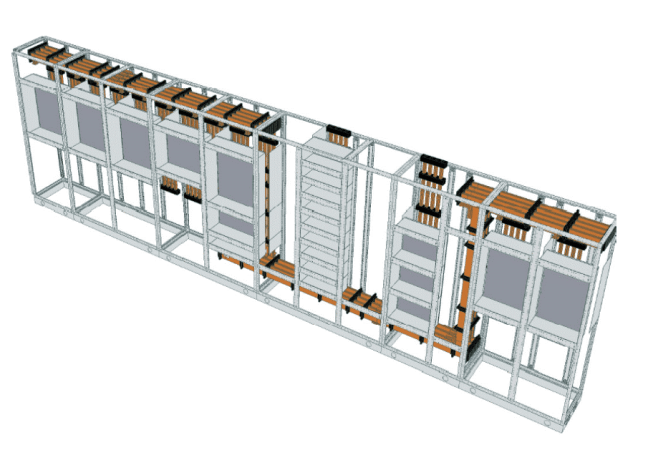The importance of design software in the switchboard industry
The use of software in the switchboard industry has a profound impact on improving safety, performance, and productivity. Here’s a brief overview of how software contributes to these areas:
Safety:
Software enhances safety in electrical systems through various mechanisms:
Design Validation: Software tools enable designers to simulate and validate electrical system designs before physical implementation. This allows for the identification of potential safety risks, such as overloaded circuits, short circuits, or insulation failures. By addressing these issues early in the design stage, software helps prevent hazardous conditions and reduces the risk of electrical accidents.
Compliance with Standards: Software incorporates industry standards and regulations, ensuring that electrical system designs meet safety requirements. It helps designers adhere to safety codes, such as proper grounding, insulation levels, and fault protection, reducing the likelihood of electrical hazards.
Fault Detection and Protection: Software-enabled monitoring systems can detect faults, abnormalities, or deviations from normal operation in electrical systems. This early detection allows for timely intervention and preventive measures, minimizing the risk of equipment damage, fires, or electrical shocks.
Performance:
Software significantly enhances the performance of electrical systems:
Optimization: Software tools aid in the optimization of electrical system designs, improving overall performance. Through simulations and analysis, designers can identify design flaws, optimize component selection, and enhance system efficiency. This leads to improved energy consumption, reduced losses, and optimized power distribution, resulting in better system performance.
Real-Time Monitoring and Control: Software enables real-time monitoring and control of electrical systems. With advanced algorithms and data analytics, software tools provide insights into system performance, load balancing, and energy usage. This information helps operators and engineers make informed decisions to optimize performance, troubleshoot issues, and ensure efficient operation.
Productivity:
Software enhances productivity in electrical systems by streamlining processes and enabling efficient workflows:
Design Automation: Software tools automate repetitive tasks in the design process, such as generating schematics, creating bills of materials, and generating manufacturing documentation. This automation saves time, reduces errors, and increases design productivity.
Collaboration and Communication: Software facilitates seamless collaboration among teams involved in the electrical system lifecycle. Designers, engineers, and stakeholders can easily share design files, provide feedback, and work together in real-time. Effective communication and collaboration improve productivity, as teams can quickly address design changes, resolve issues, and streamline project execution.
Brief overview of how software has revolutionized the industry and its vital role in the design process.
I. Enhanced Efficiency and Accuracy through Design Software:
A. CAD (Computer-Aided Design) Software:
- Streamlining the design process and reducing manual errors.
- Precise measurement, placement, and alignment of components.
- Efficient creation of 2D and 3D models, facilitating visualization.
B. Electrical Design Software:
- Simplification of complex electrical calculations and simulations.
- Optimization of electrical component selection.
- Integration of industry standards and regulations.
II. Collaboration and Communication:
A. Collaboration Tools:
- Real-time collaboration among design teams, engineers, and stakeholders.
- Seamless sharing and version control of design files.
- Enhanced communication and coordination throughout the project lifecycle.
B. Integration with Manufacturing Processes:
- Compatibility with Computer-Aided Manufacturing (CAM) software.
- Seamless transfer of design data to production machinery.
- Reduction of production errors and improved manufacturing efficiency.
III. Adaptability and Flexibility:
A. Design Iterations and Modifications:
- Rapid prototyping and iterative design cycles.
- Ability to quickly modify designs based on client requirements or changes.
- Minimization of design errors and rework.
B. Simulation and Testing Capabilities:
- Virtual testing of switchboard designs under various operating conditions.
- Prediction and identification of potential issues or failures.
- Optimal design optimization for safety and performance.
IV. Integration with Smart Technologies:
A. IoT (Internet of Things) Connectivity:
- Integration of switchboard designs with IoT-enabled devices.
- Enhanced monitoring, control, and maintenance capabilities.
- Improved energy efficiency and predictive maintenance.
B. Automation and Control Systems:
- Seamless integration with automation and control systems.
- Enhanced functionality, monitoring, and data analysis.
- Efficient management of power distribution and load balancing.
So, this Emphasis us on increased efficiency, accuracy, collaboration, adaptability, and integration with emerging technologies.
Out of the above listed significant factors adaptability and flexibility are crucial aspects of the switchboard design phase, and software plays a vital role in enabling these characteristics. Let’s explore this further:
A. Design Iterations and Modifications:
In the design switchboard industry, projects often require iterative design cycles and frequent modifications. Software provides designers with the ability to quickly iterate and modify switchboard designs based on evolving client requirements or changes in electrical systems. Design software allows for easy adjustments, component substitutions, and layout modifications, reducing the time and effort required for redesign. This adaptability helps ensure that the final design meets the specific needs of the project and minimizes design errors and rework.
B. Simulation and Testing Capabilities:
Software tools offer powerful simulation and testing capabilities, allowing designers to virtually test switchboard designs under various operating conditions. Through simulations, designers can identify potential issues or failures before the switchboards are physically built and installed. This proactive approach reduces the risk of expensive and time-consuming errors during the manufacturing and operational stages. Design software also enables optimization for safety and performance, ensuring that switchboards operate efficiently and reliably in real-world scenarios.
Designers can simulate factors such as load distribution, fault conditions, temperature variations, and electrical performance to validate the design’s functionality and adherence to standards and regulations. By conducting simulations, they can make informed decisions about design modifications, material choices, and component selection to achieve the desired performance and mitigate potential risks.
Moreover, software tools facilitate prototyping and rapid design iterations, allowing designers to test multiple design concepts quickly. This flexibility in testing and modifying switchboard designs is essential for staying responsive to evolving industry standards, technological advancements, and client preferences.
In summary, the adaptability and flexibility offered by software in the design switchboard industry empower designers to iterate, modify, and optimize switchboard designs efficiently. By leveraging simulation and testing capabilities, they can identify and address potential issues early in the design process, resulting in safer, more efficient, and reliable switchboard solutions.
When looking deep into this subject, we could further see that the thermal calculation software plays a significant role in assisting switchboard designers in ensuring the thermal performance and reliability of their designs. Here’s how thermal calculation software can help switchboard designers:

Heat Dissipation Analysis:
Thermal calculation software enables designers to analyze and predict the heat dissipation within the switchboard. It considers factors such as the power ratings of components, the current flow, and the thermal properties of materials used. By inputting this information, the software can simulate and calculate the thermal behavior of the switchboard, helping designers understand how heat is generated, distributed, and dissipated within the system.
Temperature Distribution Mapping:
Switchboard designers can utilize thermal calculation software to visualize the temperature distribution across the switchboard. This feature allows them to identify potential hotspots or areas prone to overheating. By analyzing the temperature distribution, designers can make informed decisions regarding component placement, ventilation, and heat sink requirements to ensure proper cooling and avoid thermal issues that may affect the performance and lifespan of the switchboard.
Optimal Component Selection:
Thermal calculation software helps designers choose the appropriate components with optimal thermal characteristics. The software considers factors such as thermal resistance, thermal conductivity, and power dissipation of different components. By simulating and comparing the thermal performance of various components, designers can make informed decisions regarding component selection to ensure efficient heat dissipation and prevent component overheating.

Design Optimization:
Thermal calculation software allows designers to iteratively optimize their switchboard designs for better thermal performance. Designers can simulate different design configurations, evaluate their impact on heat dissipation, and make adjustments accordingly. This iterative process helps designers identify potential thermal issues, such as insufficient airflow or inadequate heat sink capacity, and make design modifications to address them. Through this optimization process, designers can achieve a balance between thermal performance, space utilization, and cost-effectiveness.
Compliance with Safety Standards:
Thermal calculation software incorporates industry standards and guidelines for temperature limits and thermal management. Designers can ensure that their switchboard designs comply with these standards to guarantee safe operation and avoid any thermal-related hazards. The software provides real-time feedback on whether the design meets the specified temperature limits, enabling designers to make necessary adjustments for compliance.
So, we could see how thermal calculation software empowers switchboard designers to analyze, optimize, and validate the thermal performance of their designs. By accurately predicting heat dissipation, identifying hotspots, selecting appropriate components, and optimizing the design for efficient cooling, designers can create switchboards that operate reliably and safely under various conditions, minimizing the risk of thermal failures and ensuring the longevity of the switchboard system.
Overall use of software has an impact on improving safety, performance, and productivity in electrical systems.
In summary, the use of software in electrical systems significantly enhances safety, performance, and productivity. From design validation and compliance with safety standards to optimization, real-time monitoring, and automation, software tools empower engineers and operators to create safer, more efficient, and productive electrical systems.
Therefore, we Encourage industry professionals to embrace and leverage software tools to stay competitive and deliver exceptional switchboard designs.
